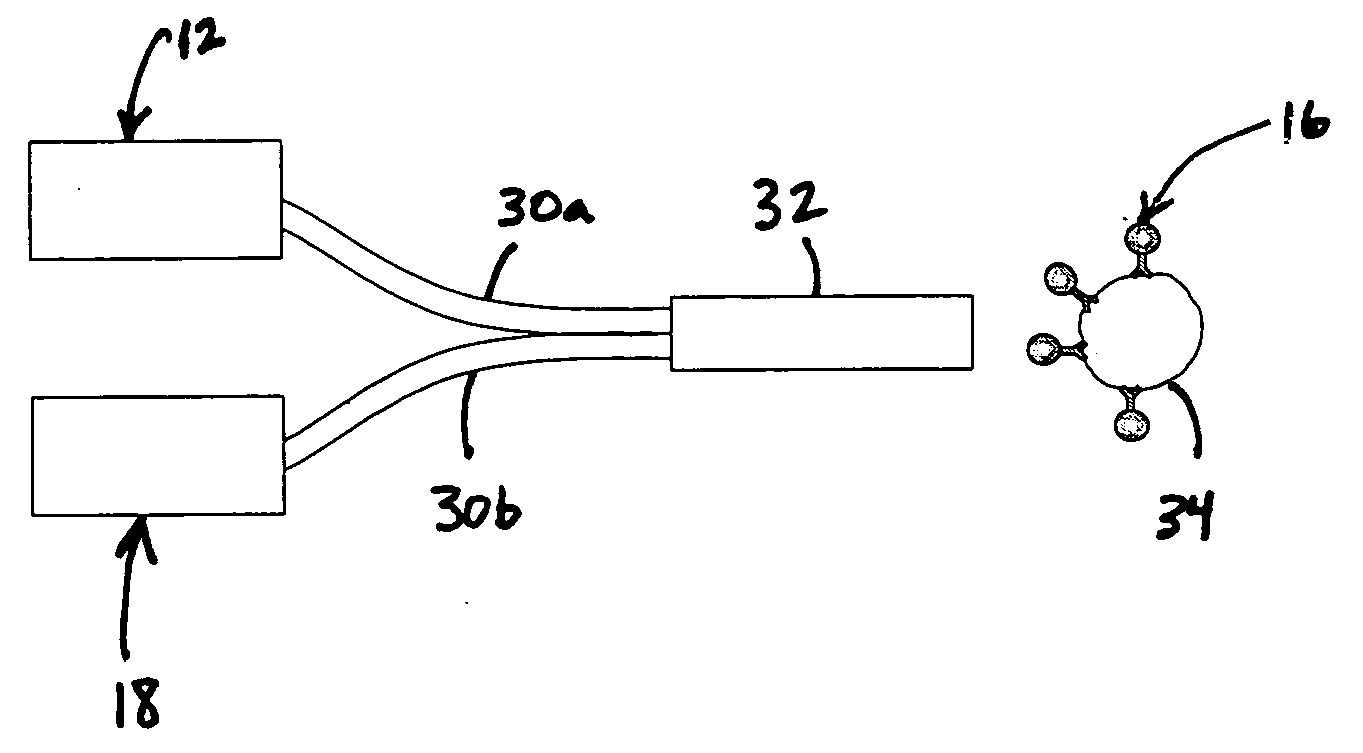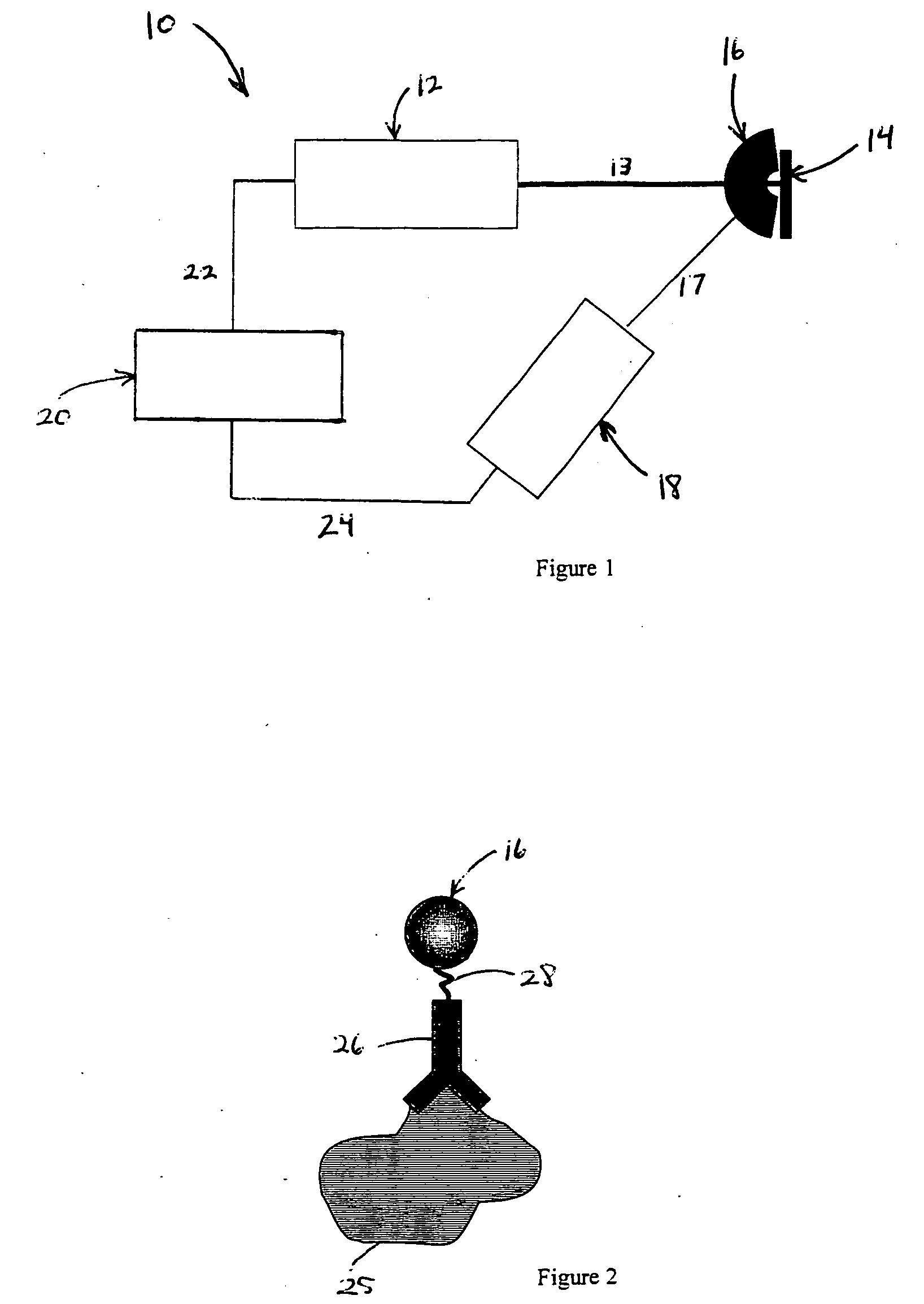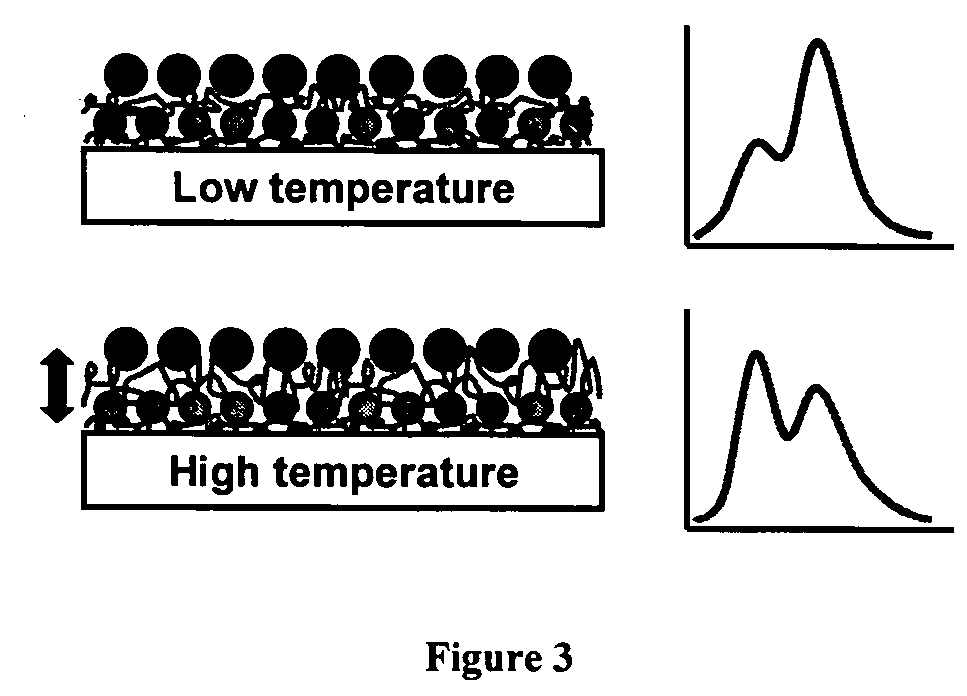Nanoparticle thermometry and pressure sensors
a technology of nanoparticles and pressure sensors, applied in the direction of thermometer details, instruments, heat measurement, etc., can solve the problems of reducing the resolution of grain size, and hazardous sparks, so as to improve the resolution, reduce the cost, and the coating layer thickness
- Summary
- Abstract
- Description
- Claims
- Application Information
AI Technical Summary
Benefits of technology
Problems solved by technology
Method used
Image
Examples
example 1
[0086] An application of nanothermometry is localized in vivo temperature probing. In the current art, polymer beads (80-90 nm in diameter) containing fluorescent molecules have been used to measure the temperature of a single living cell for disease and cancer diagnosis. However, these fluorescent molecules are susceptible to photobleaching and are not suitable for long-term monitoring. Nanoparticles are less susceptible to photobleaching, are even smaller for injection into the cell, and can be readily conjugated to biomolecules, such as antibodies, to control where they will bind (see FIG. 2). This site-specific. conjugation approach will yield nanoparticle-antibody conjugates having high binding affinity to the target.
example 2
[0087] Nanoparticle thermometry can also be used to monitor local temperature of macro molecules in vitro; one example is the hybridization and dehybridization of DNA during the polymer chain reaction (PCR) for amplification of genes, where temperature plays a key role. In the current art, an organic phosphor such as 6-carboxyfluorescein has been chemically attached to the end of DNA molecules to monitor the temperature of the DNA molecule locally, by measuring the fluorescence emission intensity. The nanoparticles disclosed herein may be used as a replacement for the organic phosphors with similar benefits as described in Example 1.
example 3
[0088] To utilize the FRET response between different nanoparticles for the thermometry application, a proper linking method needs to be selected to make the two kinds of nanoparticles close enough for FRET. The linker needs to have thermal expansion properties that will vary the FRET distance thermally. Either chemical or physical linking methods could be selected. A properly selected organic linker molecule with functional groups that can conjugate to the stabilizer on the surface of each kind of nanoparticles is one approach. The advantages of such molecular linking are strong and stable linking. A physical linking method, layer-by-layer assembly, should provide a general approach for making a FRET nanostructure.
[0089] G. Decher initially introduced layer-by-layer (LBL) assembly for oppositely charged polyelectrolytes as discussed in G. Decher, Fuzzy Nanoassemblies: toward Layered Polymeric Multicomposites, Science 277, 1232-1237 (1997), the entire content of such reference is h...
PUM
| Property | Measurement | Unit |
|---|---|---|
| temperatures | aaaaa | aaaaa |
| distance | aaaaa | aaaaa |
| excitation wavelength | aaaaa | aaaaa |
Abstract
Description
Claims
Application Information
 Login to View More
Login to View More - R&D
- Intellectual Property
- Life Sciences
- Materials
- Tech Scout
- Unparalleled Data Quality
- Higher Quality Content
- 60% Fewer Hallucinations
Browse by: Latest US Patents, China's latest patents, Technical Efficacy Thesaurus, Application Domain, Technology Topic, Popular Technical Reports.
© 2025 PatSnap. All rights reserved.Legal|Privacy policy|Modern Slavery Act Transparency Statement|Sitemap|About US| Contact US: help@patsnap.com



